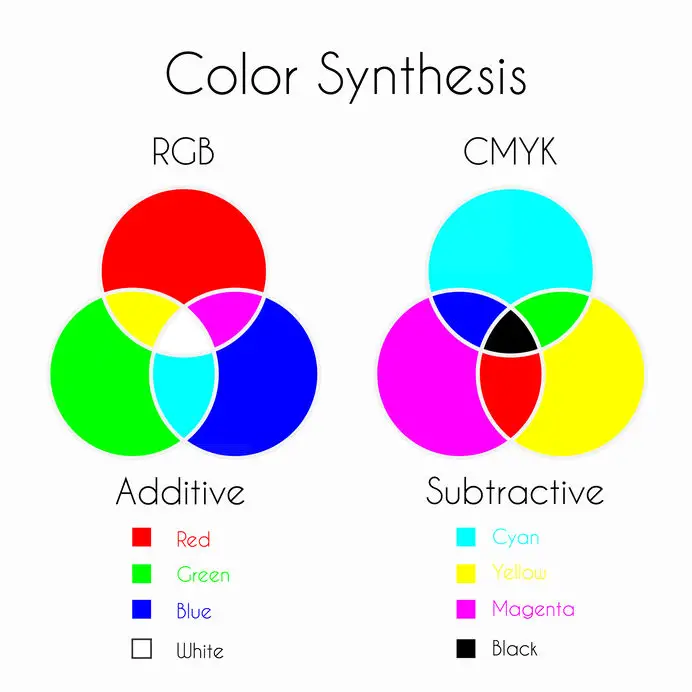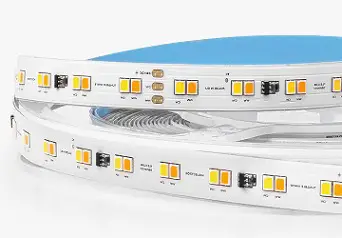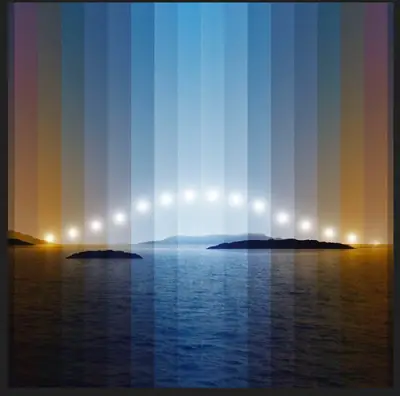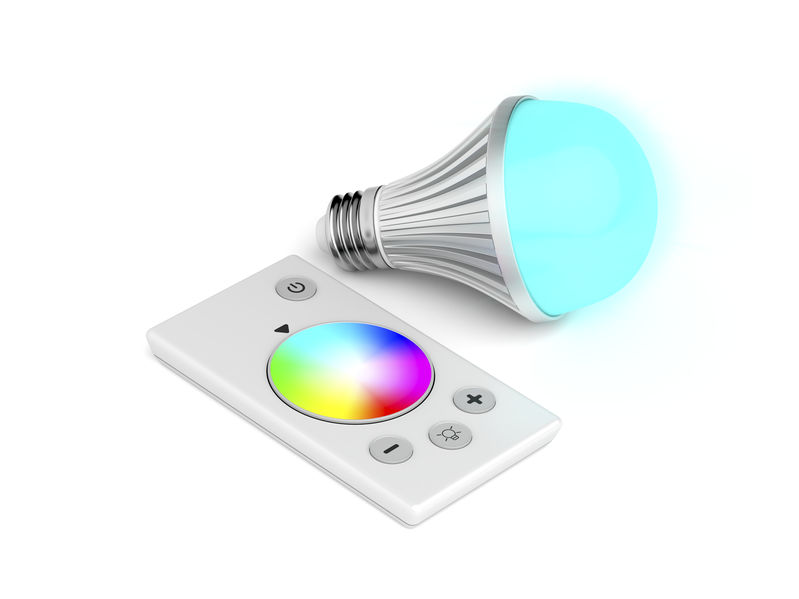RGB vs RGBW vs RGBWW LED Strips – What’s the Difference?
In the world of LED strips, it is common to hear about many different types of them, most commonly different variants of RGB strips such as RGBW and RGBWW. However, it is not always very clear what these different types of strips are or how they function.
In this article, we will cover RGB, RGBW, and RGBWW and compare them all in terms of their differences, functions and usage.
RGB Strips
Apart from regular white LED strips, RGB strips are the most common form of lighting strip. This is mainly because of their ability to change the colour they emit, which is signified by the “RGB“ in its name. RGB simply means red, green, and blue, which are the 3 base colours of light required to create white light.

In RGB-based lighting, it is also possible to create all other colours of light as well if you mix the RGB base in different amounts. All of this is according to the basis of additive color theory.
This is essentially all that RGB-based lighting is. It consists of a mixture of red, green, and blue individual LEDs that when combined into one singular LED chip create just about any desired colour.
This functions just as described in reality too. Depending on what colour is desired the LED driver connected to the strip will simply adjust the light output on the individual coloured LEDs in order to create the desired output.
RGBW Strips
RGBW strips are very similar to regular RGB strips. They have all the elements of RGB strips but also an additional white LED together with the red, green, and blue ones. This means that the LED chips in RGBW strips contain 4 different coloured LEDs, which are red, green, blue, and white.
This is because creating white light using RGB strips can be slightly inconsistent. Creating white light requires an equal amount of red, green, and blue light, which can be difficult to achieve in a singular LED chip due to the uneven distribution of colours within the chip.
This is why RGBW strips were created with the additional white LEDs because regular RGB strips are simply not great at producing a good white light.
RGBWW Strips
RGBWW is similar to RGBW in its construction but has one major difference that sets them apart. This difference is the addition of a 2nd white LED chip that contributes a warm white colour instead of the regular cool white present in RGBW.

It is easy to tell them apart visually by the two different colored LED chips present in RGBWW. This happens because the regular white from RGBW is a more yellow colour compared to the RGBWW LED chips due to the RGBWW chips having more phosphor added to them to make the white light warmer.
What’s The Difference Between RGB vs RGBW?
The difference between RGB and RGBW is the addition of white LEDs in the LED chips present in RGBW strips. While this allows for a cleaner source of white light it also allows for an even wider variety of unique colour shadings due to the increased colour depth the additional white LEDs bring.
Is this however needed most of the time? It mostly depends on the application and what purpose the LED strip is supposed to have, however in most scenarios it is not necessary.
When using coloured LED strips for applications such as decorations or accent lighting it is not usually necessary to have a high-quality white light, since the main attraction of RGB-based lighting is the different colour options anyway. Despite this though, if there is a lot of weight put on there being many different shading options it could be wise to opt for RGBW light strips.
From an economical standpoint, it could however be wise to instead opt for regular RGB strips, since they are a bit cheaper than RGBW strips due to their less complicated construction. Regular RGB strips are therefore usually more cost-efficient if the requirements for high-quality lighting aren’t unusually high.
What’s The Difference Between RGBW vs RGBWW?
As mentioned, the difference between RGBW and RGBWW is that there is additional warm white LED chips along the RGBWW strip as opposed to the RGBW strips which only have one kind of LED chip running along it.
For almost every normal instance there is no reason to use RGBWW over RGBW. This is because the ability to change between different shades/temperatures of white isn’t necessary in a large majority of cases.
This function is mostly used in commercial buildings where human comfort is a big priority, as they are used to replicate the natural lighting changes the sun goes through during the day. This is because humans are biologically programmed to function with the signals that the sun gives us and when sitting inside all day in buildings like offices it is simply not possible to get sunlight all of the time.

This is where RGBWW and its ability to change its temperature from cool to warm white comes in, as this is the way we simulate the sun inside buildings, by gradually changing the white colour to replicate the sun’s natural light pattern. This concept is a huge part of HCL (Human Centric Lighting) and is used all over the world in buildings to improve the work environment.
Seeing as the proper usage of RGBWW is rather specific and still not extremely common everywhere in the world it is safe to say that most people don’t need it. In scenarios where you want a high-quality RGB strip with many different specific shades of colours, you are likely better off going with RGBW since RGBWW and its features are unnecessary for most applications.
Which Strip Is The Best?
Which of these three different types of LED strips is best simply depends on what their application is and what purpose they are supposed to have. Generally speaking, it can be summarized like this;
RGB strips are best suited for simple applications such as a home environment or more simple decorative accent lighting. These strips are the simplest option for strip-based coloured lighting.
RGBW strips are best suited for places where a high quality of light is important and a desire for cleaner light colours is present.
RGBWW strips are best suited for commercial buildings in which humans spend a lot of their time and in which comfort is a priority. These strips are better left to extreme home lighting enthusiasts or professionals for commercial use.





